History of the Kinsey-Kenemer Cemetery [Guest Post]
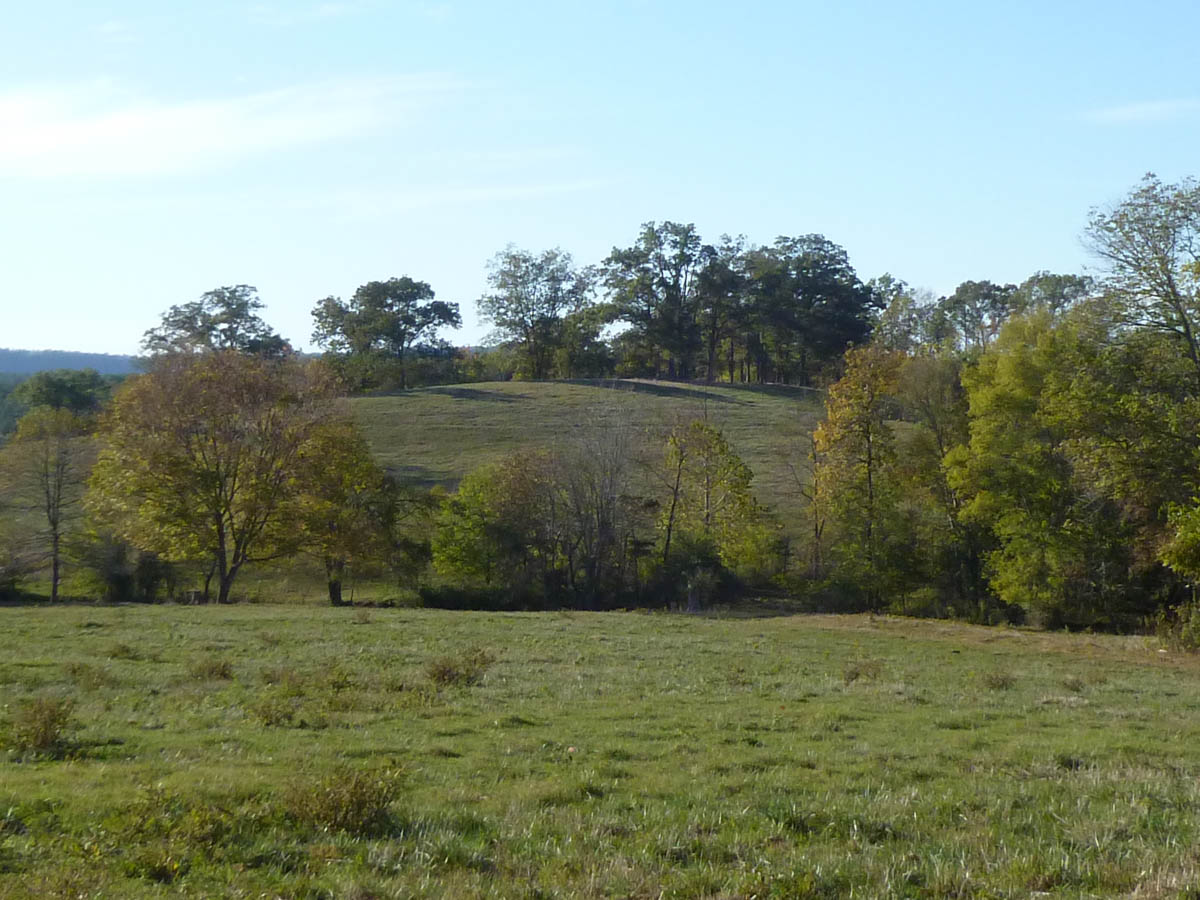
I’m pleased to present the very first guest post here at Jordan’s Journey. Today’s article and photos are by Lynne McGehee Cabe. Lynne is not only a fellow descendant of several of the earliest Armuchee Valley families but a Scoggins descendant too!
Trained as a professional social worker and public administrator, Lynne became interested in her heritage through a maternal family lineage project in graduate school. She developed a keen appreciation for the profound importance of family history to future generations. Lynne’s maternal grandparents were lifetime residents of the West Armuchee Valley. She is currently employed as a Quality Improvement Specialist with Lookout Mountain Community Services, a public behavioral health agency serving Northwest Georgia.
Lynne is particularly interested in the Cherokee, and I am fascinated by her work. I’ve wanted to explore the Cherokee connection to my ancestors more in-depth, but it’s a very difficult topic to research. Lynnne’s history of the Kinsey-Kennemer Cemetery and its Cherokee origins is a valuable step toward documenting Armuchee Valley’s Cherokee history.
—–
The Kinsey-Kenemer Cemetery is located in the East Armuchee Valley of southeast Walker County, Georgia. East Armuchee Valley is a small, rural, agrarian community nestled between John’s Mountain on the east and Dick’s Ridge on the west. The villages of Villanow and Subligna mark end points on the north and south respectively. The area is a good example of the rolling hills of the Southern Appalachian ridge and valley topography.
The Kinsey-Kenemer Cemetery is situated on a “knoll” (a small, natural hill) which rises up independently of the nearby ridges. Tucked away on private land, the cemetery was unknown to the Walker County Historical Society when members surveyed and documented the cemeteries in the County in the 1970s and 1980s. The cemetery is described similarly by different sources. Dr. Norma Tompkins writes that “Lucinda (Kinsey Brock) was buried on a tree-shaded knoll overlooking the Indian village which had been her first home as a young bride” (Walker, Heritage 103). Mary Kennemer’s records state that “Elender Kinsey married Needham Kennemer (whose [sic] grave and stone markings are on the high ridge in a cemetery at East Armuchee” (Estus). Rosa Peterson Orr wrote that “Kizziah Smith, mother of Union soldier Asa D. Smith, and mother-in-law of Mary Clementine Brock Smith, was buried at the foot of John’s Mountain” (Orr, Personal).
The cemetery on the knoll was an important and well-known place not only to the European settlers but also the native Cherokee before them. Oral history holds it was originally a Cherokee burial ground. Indeed, the property has many features typical of Cherokee settlement sites including a vibrant creek and open flood plain. Evidence of a Cherokee-built cabin remains. The cabin was visited by a group of professionals in the early-to-mid 1990’s as a part of an assessment of Cherokee structures in the region. The property owner was informed by the group, whose identity is unconfirmed, that the cabin was identified as Cherokee-built due to the hand hewn floor timbers.
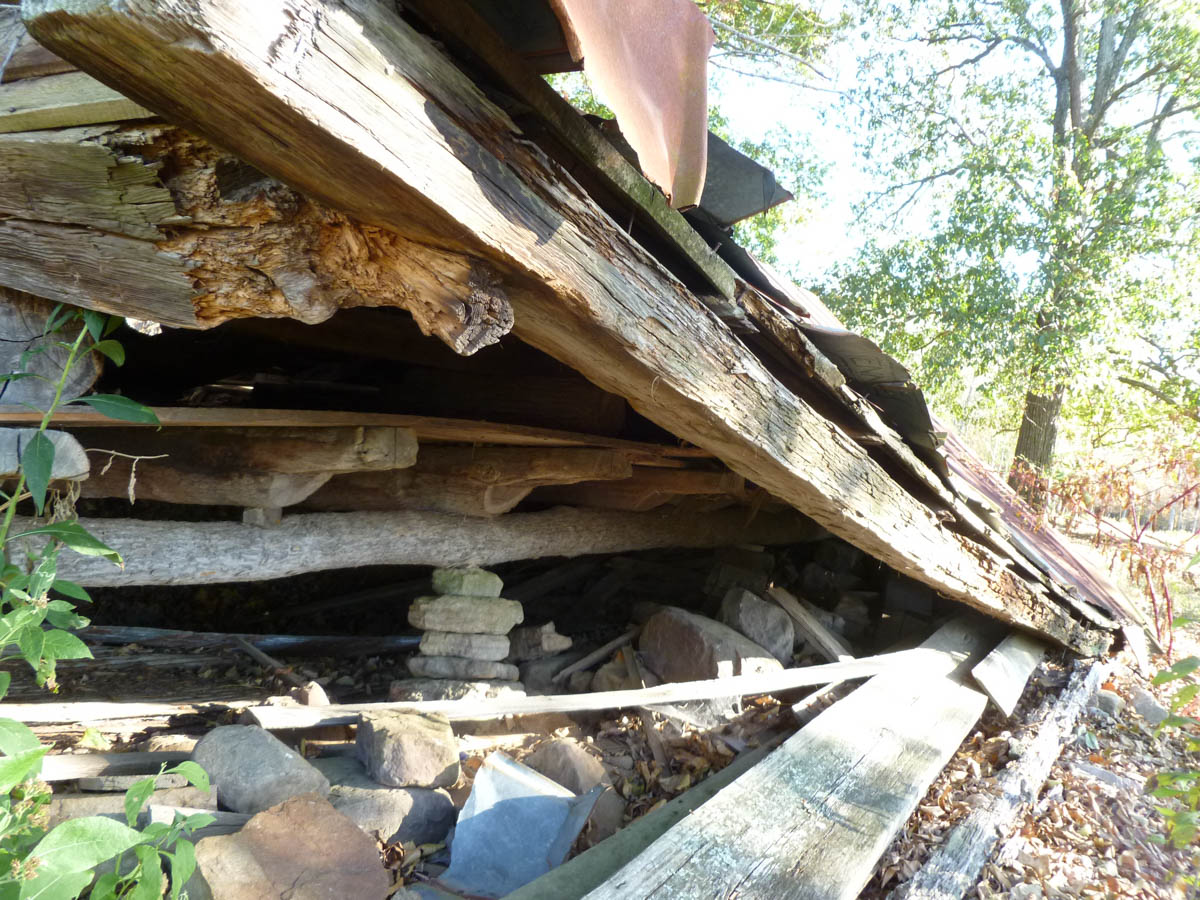
Oral history holds that Lucinda Kinsey Brock’s father, Roland Kinsey (1790-1866), won the knoll property in the 1832 Cherokee Land Lottery. James Smith’s book The Cherokee Land Lottery, Containing a Numerical List of the Names of the Fortunate Drawers in Said Lottery is the primary reference for land lot assignments. Comparison of the ridge contours and waterways in the area to the “engraved maps of districts” included in Smith’s work reveals the lot awarded to Roland Kinsey is probably located in current Resaca, GA. The story of how the Kinsey family settled instead in East Armuchee probably will never be fully revealed. However, Cherokee land lottery experts explain it was common for “fortunate drawers” of Cherokee property to trade lots. Roland Kinsey must have traded his lot to acquire the East Armuchee property. Smith explains, “This grant from the State of Georgia was his (the recipient’s) title to the lot and from that time (of the award) he could do whatever he wished with his property, although the state did not require that he live on it or cultivate it.” Further study of Smith’s work and an examination of topographic characteristics including ridges and waterways indicate the knoll property appears to be located on land lot 227, in the 26th district, third section. This lot was awarded to Absolem Thompson of Hall County, GA. The connection between Roland Kinsey and Absolem Thompson may never be known. (Current land lot identification and location approximate the land lot system used by the Cherokee Land Lottery.)
The Georgia Chapter of the Trail of Tears Association (TOTA) is currently engaged in an ambitious project of digitizing the Georgia land lot maps as well as overlaying on them the many federal assessments of Cherokee property completed before the Removal. The goal is for early Cherokee roads and settlements to be evident on the land lot maps. When completed this work may allow accurate identification of Cherokee settlement on the land lot on which the Kinseys settled. The TOTA project also has a goal of establishing GPS coordinates for each land lot definitively identifying the land lot on which the Brocks and Kinseys settled and the “fortunate drawer” to whom it was awarded.
In 1836 the Kinsey and Brock families settled on the property (Walker, Heritage 103). As was the practice of early settlers, the families assumed the property and cemetery as their own even though it was occupied by the Cherokee. Many Kinseys, Brocks, and their extended family members including Kenemers are buried in the cemetery among ancient Native American graves. While there are many smooth sandstone grave markers carried from John’s Mountain, and many ground indentations indicating graves, identification of graves is difficult to impossible.
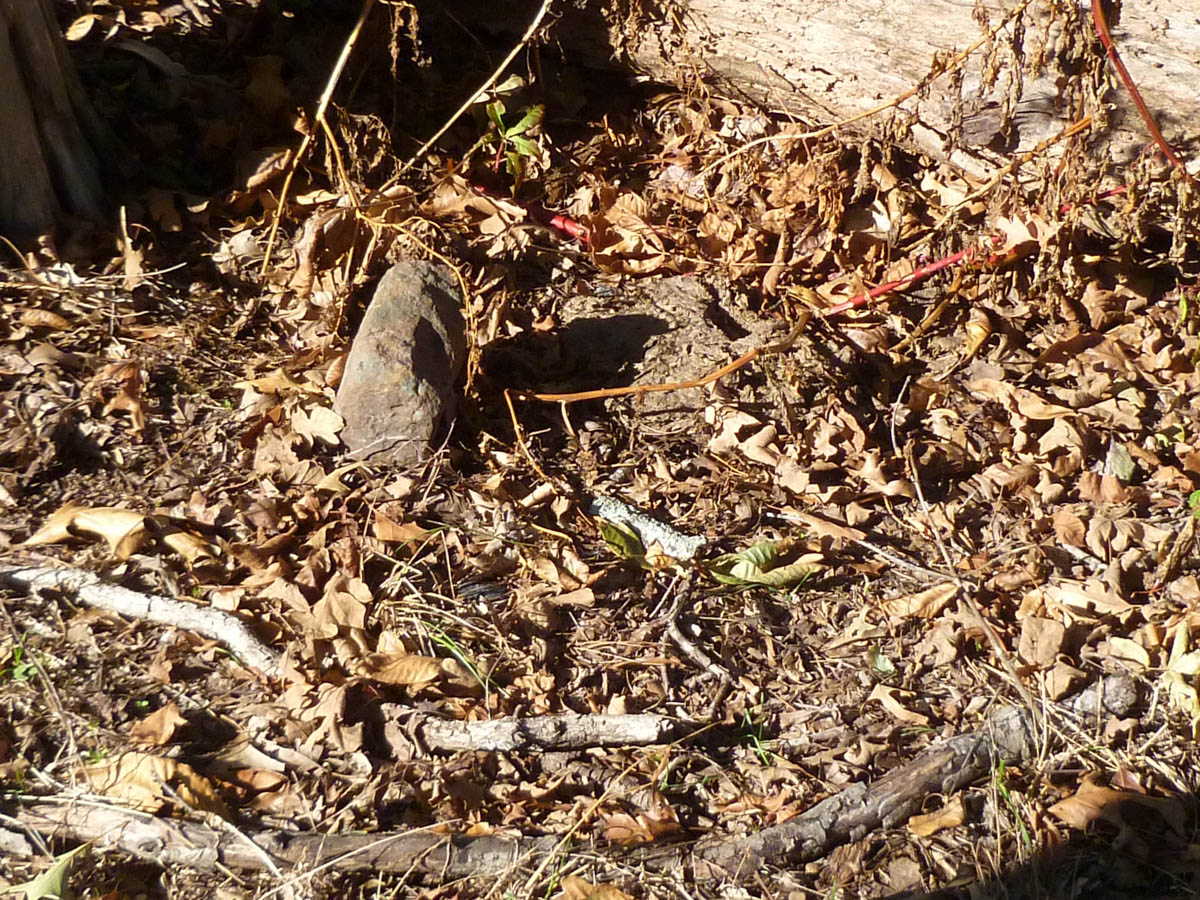
Only three engraved markers are found on the East Armuchee knoll. Two are for Morris family children, both boys, who died as infants. Robert Morris’ marker identifies his birth year as 1882 and his age at death as 2 months 8 days. Eddie Morris’ marker records his birth year as 1884 and age at death as 1 year 6 months. The third marker in the Kinsey-Kenemer Cemetery is a contemporary one placed there as a memorial for patriarch Needham Kenemer (1812-1885).
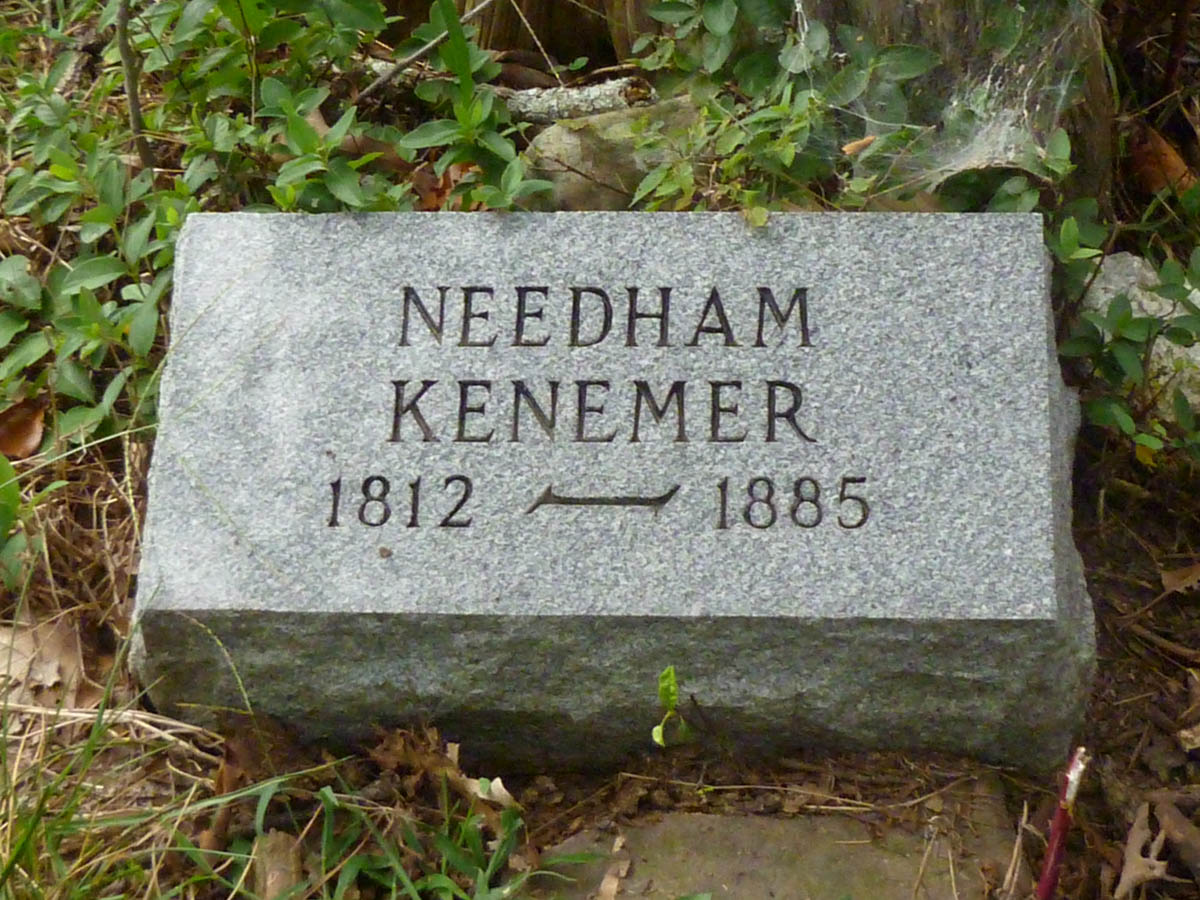
Needham Kenemer was a well-loved member of the East Armuchee community. He is fondly remembered in Rosa Peterson Orr’s History of the Concord United Methodist Church: “Uncle Needham would kneel down to pray and rise shouting. He was a man with a rich Christian experience (who) stayed on the active list with spiritual fervor.” He was described as a happy man, often heard in the community calling his cows from the forests of John’s Mountain (Orr, Concord 4). The Kennamer Family File from the LaFayette-Walker Public Library describes Needham as a “shouting Methodist and a good farmer, with but little education,” and goes on to say, “His life is still held in high esteem” (369).
Needham Kenemer married Elenda Kinsey, sister of Lucinda Kinsey Brock (my third great-grandmother), in 1833. They had four children. Upon Elenda’s early death, Needham married Rebecca Jane Brock who might have been Lucinda’s daughter Rebecca Jane Clenda Brock. Needham had five children with Rebecca. The Morris children whose markers are in the Kinsey-Kenemer cemetery were Needham and Rebecca Kenemer’s grandchildren by their daughter Martha Jane Kenemer Morris (Kennamer Family File). Thus the Kinseys and Kenemers are connected by multiple marriages including Needham Kenemer’s marriages to Lucinda Kinsey Brock’s sister and perhaps also her daughter.
The Kinsey and Brock families cohabitated with the Cherokees in East Armuchee from the time of their settlement in 1836 to the 1838 Cherokee Removal. Oral history tells us the families befriended several Cherokees who lived on the property and even assisted a couple of males in successfully hiding and escaping the Removal. One story depicts a male hiding in a cave in John’s Mountain.
Uncovering information about the Cherokees who once inhabited the property where my ancestors lived would be of significant historical value. The Cherokee are an important and under documented part of Armuchee Valley history. Their story has not been properly told. I have a great appreciation for the historic plight of the Cherokees and I feel a personal connection to those who lived near the knoll. I would like to become acquainted with the descendants of the Cherokee people befriended by my ancestors. That ancestral home is a shared past that I would like to explore together. If you have any information about the Cherokees who once lived along East Armuchee Creek near John’s Mountain and established the burial ground my ancestors named Kinsey-Kenemer Cemetery, I would love to hear from you.
You can contact Lynne by leaving a comment on this blog post, or via email at lynnecabe@gmail.com, and via phone at 706-694-0956.
Note: While Kenemer is the most frequent spelling of the name, spellings vary and are provided here as presented by the sources.
An earlier version of this article appeared in Volume XXIX, Number 3 (ISSN 1544 3302) of the Walker County Historical Society quarterly newsletter.
SOURCES
Estus, Donna Grigsby, transcriber. Letter from Kay Kennemore to William David Grigsby, 1981. This letter included information from written records dated 16 Aug 1969 on the Kennemer and Kinsey families, collected by Mary G. Kennemer of Sardis, Mississippi, originally compiled for James Kinsey.
Orr, Rosa Peterson. History of Concord United Methodist Church near near [sic] Villanow, Georgia. Ray E. Roper, 1977. Print. WorldCat.
Orr, Rosa Peterson. Personal correspondence with Lynne Cabe and other family and friends, 27 Dec 1979.
Smith, James F. The Cherokee Land Lottery: Containing a Numerical List of the Names of the Fortunate Drawers in Said Lottery, with an Engraved Map of Each District. Baltimore: Genealogical Pub. Co, 1969. Print. WorldCat.
“Kennamer Family File.” Photocopied pages 368-375 from an unidentified source. Georgia History & Genealogy Room, LaFayette-Walker Public Library, LaFayette, GA. Retrieved circa 2009 by Lynne Cabe.
Trail of Tears Association, Georgia Chapter. Web.
Walker County Historical Society, comp. Walker County, Georgia Cemeteries. LaFayette, GA: Walker County Historical Society, 1987. Print. WorldCat.
Walker County History Committee, comp. Walker County Georgia Heritage, 1833-1983. LaFayette, GA: Walker County History Committee, 1984. Print. WorldCat.
Take a trip into the past
Thanks for visiting the Jordan's Journey blog archive. These posts have been made available here for continued reference and research purposes.
The original book is available to order from our shop or your favorite bookseller.
For questions or other inquiries: get in touch.

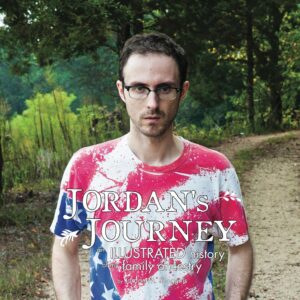
It was very nice to meet Lynne at the library. I enjoyed reading her writing. There were definitely Indians living in East Armuchee at one time because my sister’s family frequently hunted for the arrowheads after the fields had been plowed. One nephew has a collection of those he found. I remember people finding them and I would play with them. Mother also had some rocks that they used to grind corn. The rocks had worn thumb prints in them. We always called them Indian rocks. I never knew of that cemetery when I lived there as a child. However, I wasn’t as interested in cemeteries when I was young! It is not as easy to find arrow heads anymore because not many of the farmers plow the land in the bottom lands as they once did.
Enjoyed reading this. In the list of sources, there is a discrepancy. There is no such person named “Mary G. Kennemer” from Sardis Mississippi. I believe the name is “Kay G. Kennemore”. Thanks for posting this! Still a good read after all these years.
I have traced Lucinda Kinsey to be my great, great grandmother. I have her married to a John L. Brock who were the parents of Rebecca Clenda Jane Brock, who married Jesse Kennemore. Jesse and Rebecca Brock Kennemore were the parents of my grandfather Needham W. Kennemore, who married Mary Ella Bohanning. They were the parents of my grandmother, Rebecca Malinda Kennemore Clark. I am, of course, certain of the facts from Jesse and Rebecca Brock Kennemore on down but still a little muddled about the parentage before Jesse and Rebecca Brock Kennemore. Can you clarify?
Hi Jima. Thanks for your comment. Since you’re looking for more info about the Kennemer/Kennemore line, Lynne Cabe (the author of this post) might be able to help you. Her email and phone number is listed above. Drop her a line and let her know you read her article here on Jordan’s Journey!
Is Jesse Kenemer the one who moved to Green County AR?
Needham is my great great great grandfather. His father is David who brought his father John(in his 80/s) to Walker County GA from Pickens Count SC in 1817. John one of three brothers with Hance(AL Kennemer’s) and George(SC & NE GA). These boys were sons of Jacob who came with his father or grandfather Staffa on the ship Mary from Rotterdam Holland in 1732. The ship record shows Staffa 60 and Jacob 16. reason for Father or Grandfather>
I traveled to Rotterdam tracing the family.
I believe I can help you with connectingbefore Jesse.
My family moved to a property on East Armuchee last year and just today found a Kinsey graveyard on it. Laid to rest are B. G. Kinsey (1820 – 1904), Synthia Kinsey (1820 – 1888), and Caroline Kinsey (1844 – 1922). There may be more, but it is in major disrepair under a downed tree. Seems there would be kinship of some sort.
My family moved to a property on East Armuchee last year and just today found a Kinsey graveyard on it. Laid to rest are B. G. Kinsey (1820 – 1904), Synthia Kinsey (1820 – 1888), and Caroline Kinsey (1844 – 1922). I found a Flickr pic that seems to show it as Old Ben Hill Pope. I was wondering if you could give me any more info?
Patricia and Lynne,
My mother and I are looking for the Kinsey Graves. We are descended from Roland Kinsey and Synthia Kinsey. Caroline was my 4th great aunt. Thank you so much for posting this information! I was wondering if there was anyway the owners of these properties might be willing to allow us to document these graves. Any information would be greatly appreciated!
Thank you!